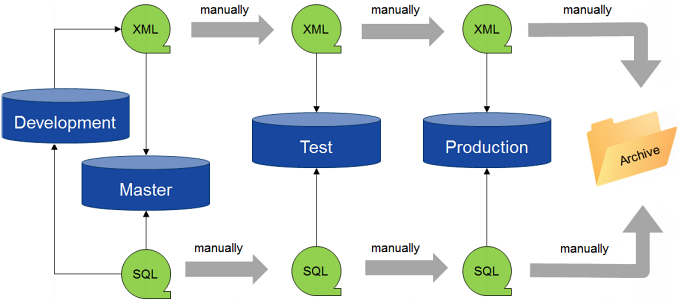Manual Deployment Process
The manual deployment process in projects usually sticks to the following schema: Consultants are working on several tasks parallelly, creating the customization outputs (XML and SQL files) and exporting them into a shared file system. The files are given a sequence number to enable them to track the customization versions and history.

Schema of the common manual deployment process.
The manual deployment process can be characterized by the following processes and elements:
- There are several stages (environments) in a project: The Development stage, the Master stage, the Test environment, sometimes the Integration environment and the Production stage. The number of stages corresponds to the number of different databases (i.e. Development, Master, Test databases...).
- To organize and keep track of the customization changes, the customizers may use an external file (usually it is the *.xls file) to record the changes continuously.
- The physical changes (the SQL files and the XML files) are stored in the shared file system.
- The XML files and SQL files are manually transported to all of the systems.
The manual deployment drawbacks are mainly as follows:
- Prone to errors.
- Slow and time-consuming.
- Plenty of manual work involved.
- May result in confusion (especially in a teamwork environment).